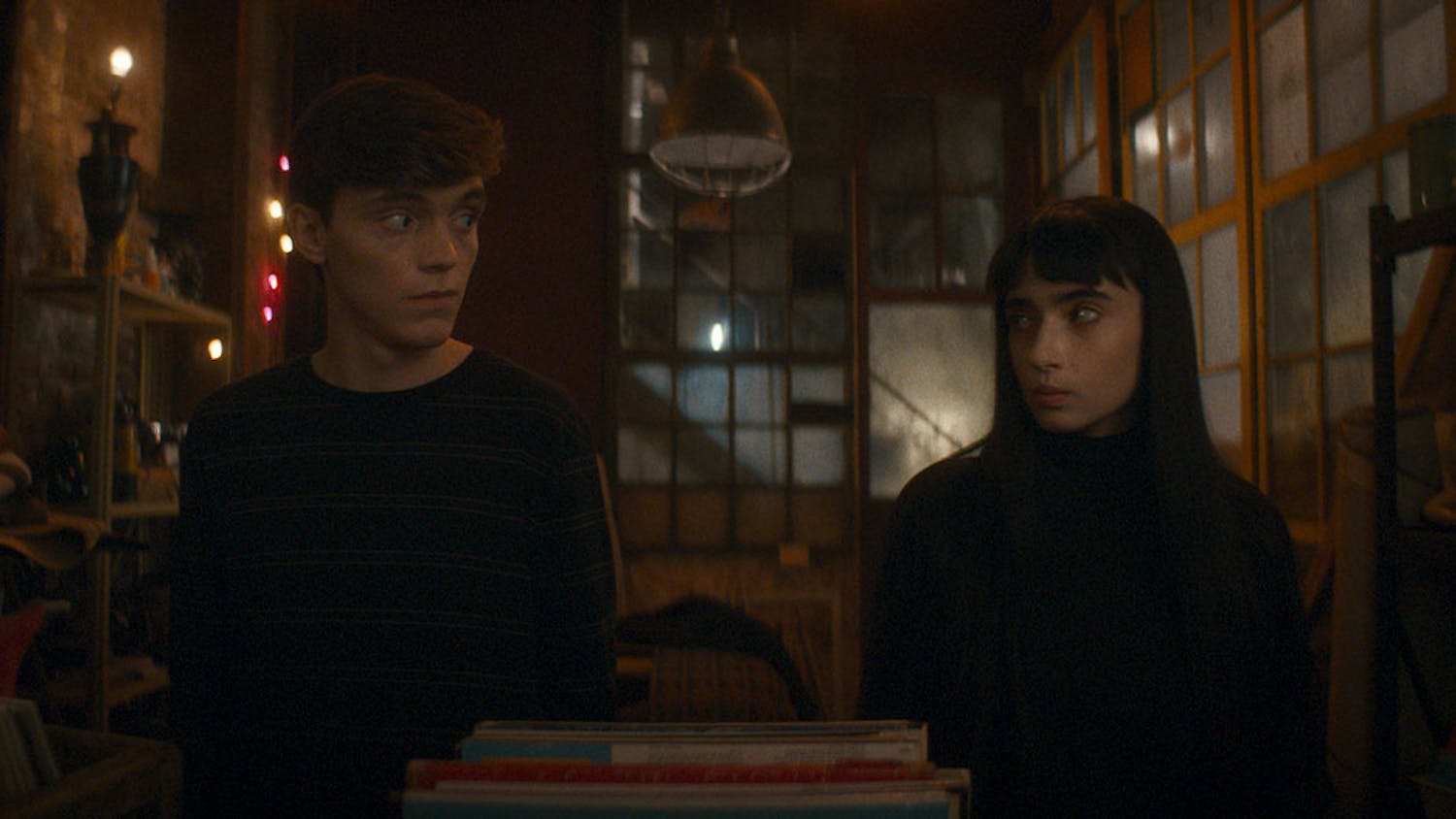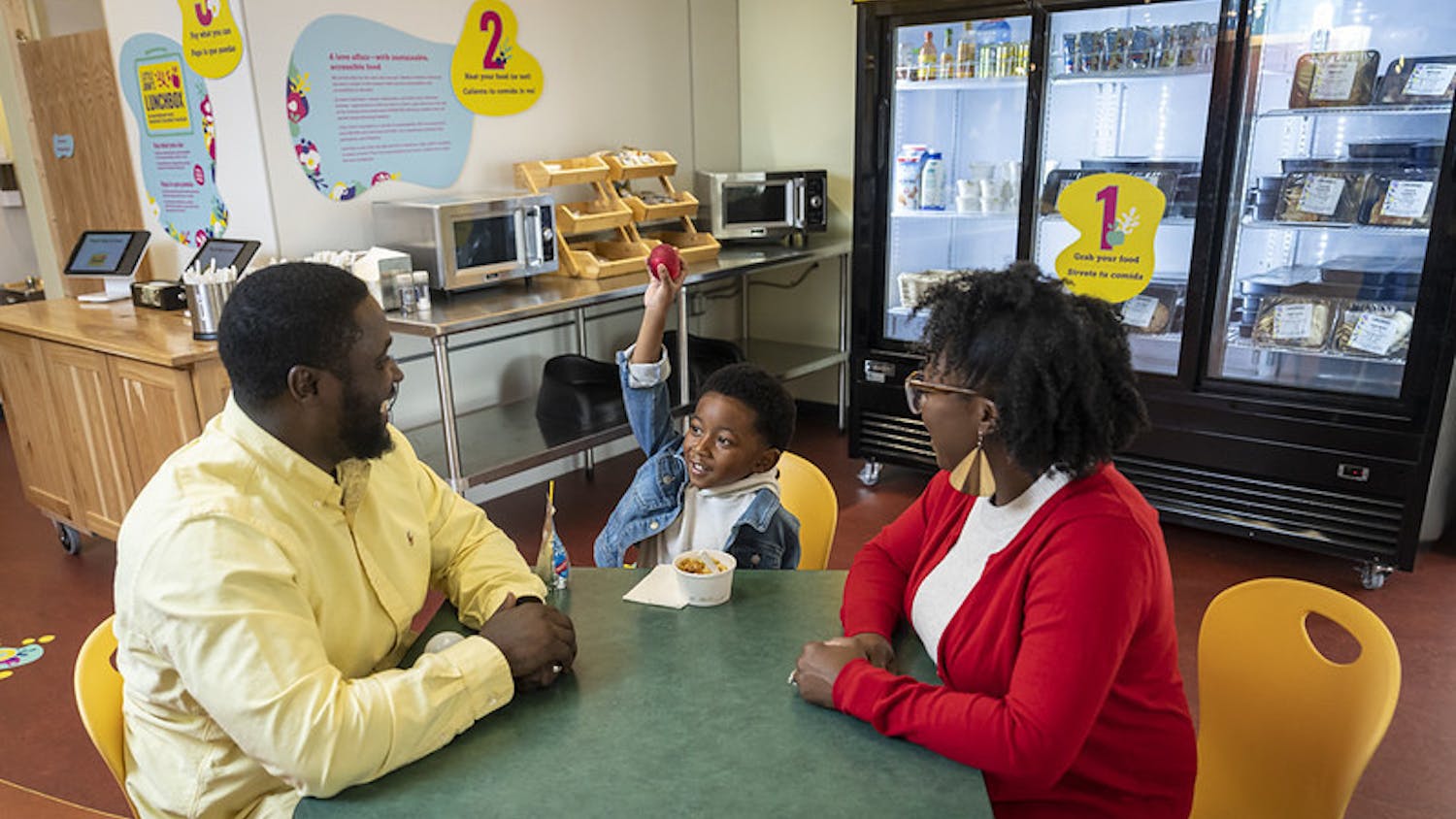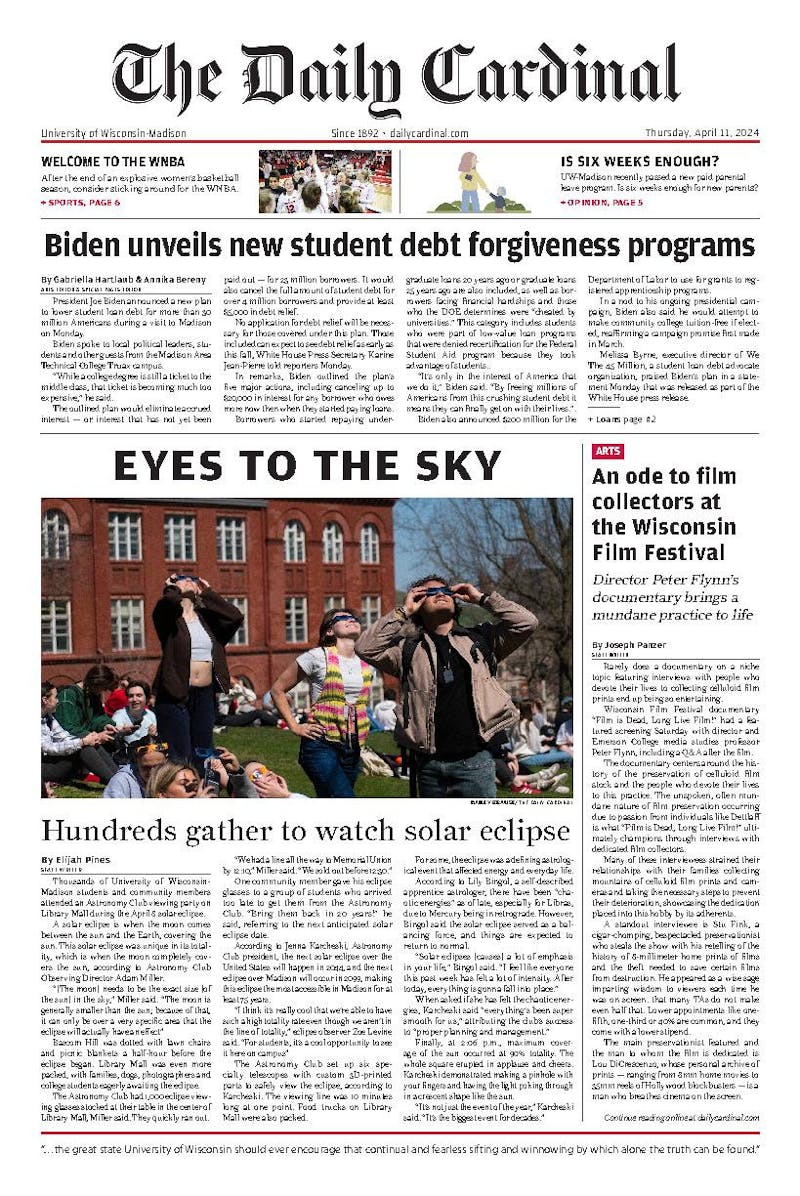UW-Madison students, including some indoors behind closed windows, endured symptoms of tear gas exposure and witnessed destruction as demonstrators took to State Street last Saturday to protest the killing of George Floyd, a Black man, by a white police officer in Minneapolis on the previous Monday.
Law enforcement officials deterred protesters with tear gas, which seeped through closed windows in nearby buildings. UW-Madison rising senior Kaori Torres continued to experience symptoms of tear gas exposure within her apartment complex, which overlooks State Street, at least one hour after she last witnessed police shoot tear gas at protesters. She had to wear a mask indoors to fight off the effects.
Recent UW-Madison graduate Amy Shircel documented the protests on social media from the roof of the same building.
“Tear gas is not a joke. This f-- burns like hell. I can’t even see right now,” Shircel said through tears brought on by the gas. “They’re shooting it all over State.”
In a video Shircel posted on Instagram, officers can be seen shooting tear gas at protesters from a distance. Some demonstrators ran into the alleyway below Torres’ apartment to escape and pour milk on themselves.
Police officers used pepper spray in addition to tear gas to avert protesters on State Street, according to Torres.
“It’s like a staredown. Whoever moves first,” Torres said of a line of police officers and a line of protesters who faced off about 20 yards from each other on State Street Saturday night.
When the line of police officers moved forward, the protesters slowly backed away, according to UW-Madison student Karen Hayes, but the officers shot tear gas at the demonstrators regardless.
Former president of the African Students Association at UW-Madison Damitu Hamda, who grew up in Madison and attended past protests in the city, said she was glad to see protesters demonstrate solidarity Saturday night, but tear gas caused them to disperse shortly after.
Yet, Hamda was shocked by the violence that ensued following Saturday morning’s peaceful protest.
“I could not believe what I was hearing,” Hamda said of when she learned people were looting businesses on State Street. “People don’t do that here.”
Around 10 p.m. Saturday, Hamda walked to the area near Urban Outfitters, witnessing allegedly intoxicated individuals — many without face coverings — stealing merchandise.
Madison had not seen such destructive demonstrative methods since a UW-Madison student protest against Dow Chemical, which produced napalm for the U.S. government during the Vietnam War, turned violent in 1967. Police beat UW-Madison students and used tear gas to force demonstrators to disperse.
“I was just standing there in shock watching people tear down State Street,” Hamda said of Saturday night’s events. “It was just complete chaos.”
According to Hamda, multiple State Street business owners stood in front of their properties in an attempt to protect their stores.
“It was very ruthless,” Hamda said of looters, adding she repeatedly wondered, ‘What else are these people capable of?’ throughout the night. “I’ve never felt like Madison was a place where I needed to watch my back.”
Hamda also witnessed individuals laugh and take pictures with a burning police car on Gorham Street.
“That was just really a scary sight to see…like what has Madison become?” Hamda said. “This is so out of character. This is so unexpected for Madison.”
Hamda also described the manner in which some demonstrators spoke to police officers as “unbelievable.”
Of those antagonizing police officers, Hamda said “it was mostly white people.”
“This is not something I would do as a Black person because I’m not going to risk my life like that,” Hamda said.
Hamda added that she witnessed a white woman walk down State Street and directly through a police line with ease.
“They didn’t flinch…There was no reaction from them,” Hamda said, leading her to question, “What if somebody else like a person of color had stepped any closer to you?”
Torres and Hayes both expressed concern about some demonstrators’ tactics.
“They were just destroying things,” including large potted plants lining State Street, Torres said of the rioters, many of whom were white. “I can see why they’re doing it, but I do feel bad for the small business owners, especially now because of corona; businesses are really struggling.”
The Soap Opera, a business located on State Street, left notes to rioters reading “FAMILY SHOP” and “I HAVE KIDS” in their property’s windows.
“The timing’s not great, but obviously you can’t time either of those things,” Hayes said of coronavirus outbreaks and protests against police brutality. “I think [the damage is] unfortunate,” Hayes said. “Madison is going to feel a lot of those repercussions.”
Throughout the night, rioters smashed windows and stole items from multiple local businesses.
“I was really unhappy with what I was seeing,” Hamda said of initial rioting and looting that occurred in Minneapolis. “What’s the point of burning up a Target?”
However, Hamda said she learned to understand the reasoning behind such actions, which have followed decades of peaceful protests to achieve racial justice that have failed to elicit positive governmental responses.
Wisconsin Senator Ron Johnson, who said rioting is not the appropriate solution to racial injustice in a Tweet Friday, previously criticized National Football League players who kneeled during the National Anthem and urged them to “spend a little of time to acknowledge and stand, to recognize, that symbol of that sacrifice” in 2017.
“A lot of people feel like they need to be destructive in order to feel like they’re getting their voices heard,” Hamda explained. “It’s hard to stand by it when you are witnessing it happen to your own city. This affects a lot of people personally…not just the police.”
Though Hamda said she has an already complicated relationship with such destructive protest tactics, she noted the current COVID-19 pandemic further convolutes the situation. Hamda explained the root objective of rioting to achieve racial justice makes sense, but has become less prominent.
“What’s really complicated with it happening now is we’re in a pandemic…society hates being restricted,” Hamda said. “The purpose of the looting and the purpose of the rioting is getting lost.”
Other State Street establishments expressed support for demonstrators via social media, taking a stance different from The Soap Opera.
Local brunch spot, Short Stack Eatery, posted a photo of its own windows allegedly shattered by rioters Monday night, with a caption reading, in part, “Windows can be fixed and stuff replaced. The ONLY thing we need to be focusing on right now is BLACK PAIN.” The caption also encouraged followers to donate to racial justice nonprofits and called on the city of Madison to “decide that Black Lives are worth more than property.”
State Street business, The Pipefitter posted a statement via social media.
“It’s all part of the bigger picture, and it’s important to listen…sometimes you gotta start a revolution,” The Pipefitter said of rioting in a statement on Instagram.
Hawk’s Bar & Grill, another business on State Street, shared similar sentiments.
“If burning everything to [the] ground brings proper attention to the disgusting injustice in our country…so be it,” said Hawk’s Bar & Grill on Facebook. “Our property is replaceable. Black lives aren’t.”

![IMG_2145[1].JPG](https://snworksceo.imgix.net/car/10d0ac53-485e-485c-8f97-d94507d27ae8.sized-1000x1000.JPG?w=1000)




